Samyang AF 24 mm f/2.8 FE
5. Chromatic and spherical aberration
Chromatic aberration
Lack of low dispersion elements in the construction of the tested lens is keenly felt in this category. The Samyang 2.8/24 FE experiences some problems with longitudinal chromatic aberration. They are, of course, the most pronounced by f/2.8 but they remain completely visible even by f/4.0 and only after employing f/5.6 you might avoid them almost completely. |
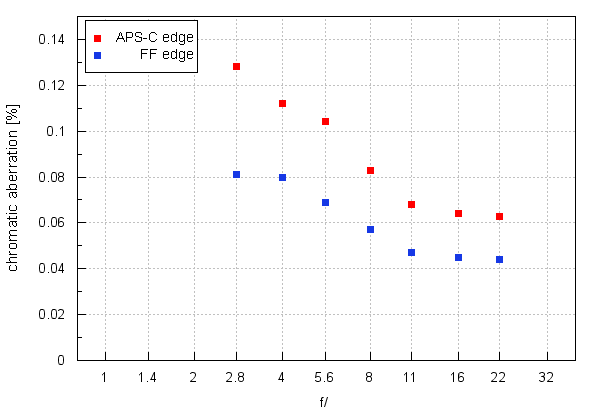
Please Support UsIf you enjoy our reviews and articles, and you want us to continue our work please, support our website by donating through PayPal. The funds are going to be used for paying our editorial team, renting servers, and equipping our testing studio; only that way we will be able to continue providing you interesting content for free. |
- - - - - - - - - - - - - - - - - - - - - - - - - - - - - - - - - - - - - - - - - - - - - - - -
There are no serious reasons to complain. The worst situation you see near the maximum relative aperture on the edge of the APS-C sensor where the aberration is close to a high level. Fortunately, by stopping down the aperture, you can limit it so its level is low or medium at the most.
| A7R II, RAW, f/2.8 | A7R II, RAW, f/16.0 |
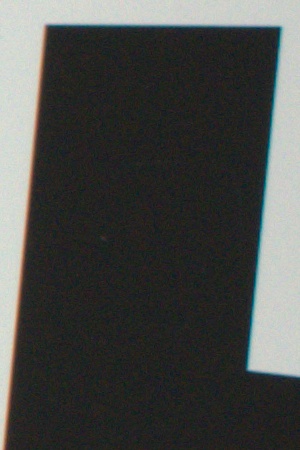
|
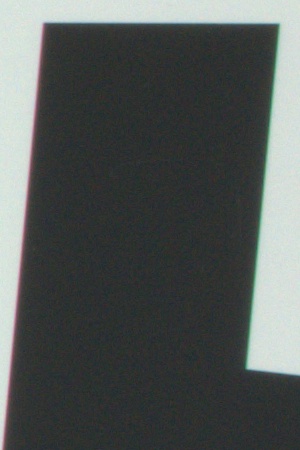
|
Spherical aberration
When it comes to ‘focus shift’ it is difficult to notice it; after all the tested lens provides a significant depth of field. Still if you compare photos of our autofocus testing chart taken by f/2.8 and f/5.6 you can see a slight shift of the centre of depth of field toward longer distances.If you compare out-of-focus circles of light before and after the focus you can notice a bit more symptoms of spherical aberration because those circles can hardly be called similar.
| A7R II, f/2.8, in front of | A7R II, f/2.8, behind |
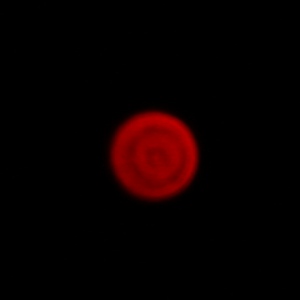
|
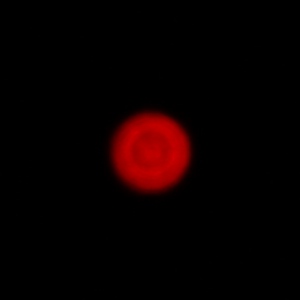
|
Still only by comparing respective resolution graphs it is possible to notice the real level of spherical aberration. In the first case we set the focus as well as possible by f/2.8 and then we took photos without moving the focus ring but closing down the aperture more and more. During the next phase of the test we set the focus anew at every aperture. A comparison between both these graphs we show below.
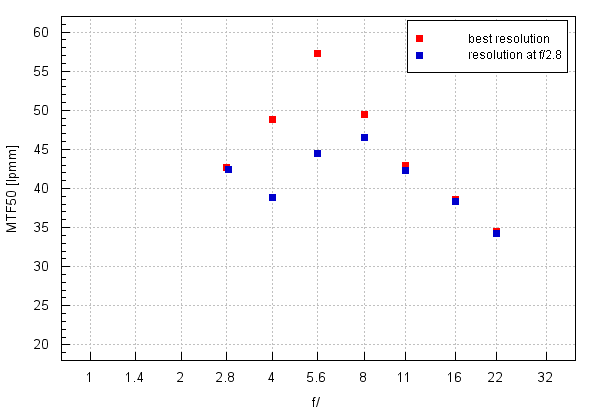
If there were no spherical aberration problems both graphs would cover each other within a margin of error. Still here the difference is clear and distinct. It means the Samyang AF 24 mm f/2.8 FE has a lot of problems related to spherical aberration.






